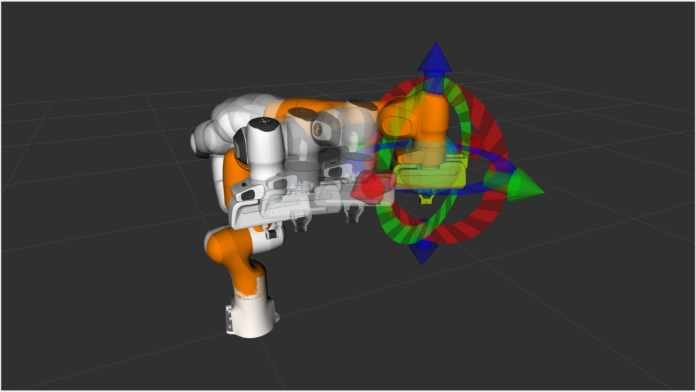NVIDIA has announced new cloud-based solutions designed to accelerate robotics development, unveiled during the AWS re:Invent event. The company introduced improved tools for robotics developers along with the availability of NVIDIA DGX Cloud on Amazon Web Services, as well as new offerings in artificial intelligence and quantum computing.
NVIDIA Isaac Sim is now accessible on the NVIDIA L40S GPUs within Amazon EC2 G6e instances. This advancement is expected to significantly boost robotics simulation capabilities and speed up AI model training. Isaac Sim, which is built on the NVIDIA Omniverse platform, provides developers with a sophisticated environment to simulate and evaluate AI-driven robots in realistic virtual settings.
In addition, NVIDIA introduced OSMO, a cloud-native orchestration platform that streamlines the management of complex robotics workflows across AWS computing resources. According to Akhil Docca, a senior product marketing manager for Omniverse at NVIDIA, this integrated hardware and software solution empowers teams of all sizes to scale their physical AI workflows more effectively.
Understanding ‘Physical AI’
NVIDIA defines “physical AI” as the development of AI models that can interpret and interact with the real world. This next-generation approach powers autonomous systems such as self-driving vehicles, industrial manipulators, mobile robots, humanoids, and even robotic systems that manage facilities like factories and warehouses. For successful implementation, physical AI requires a robust “three-computer solution” that covers training, simulation, and inference. However, generating the extensive datasets needed for accurate real-world performance can be both challenging and expensive. Simulation offers a practical alternative by speeding up the processes of training, testing, and deploying AI-driven robots.
Scaling Simulation and Training with Cloud GPUs
Developers can leverage simulation to validate and fine-tune robot designs and algorithms before any physical deployment. Simulation also enables the optimization of facility and system designs ahead of construction or renovation, potentially reducing expensive changes during manufacturing. The new Amazon EC2 G6e instances, powered by NVIDIA L40S GPUs, are reported to deliver up to twice the performance of previous architectures while providing the scalability required to handle increasingly complex simulation scenarios. This versatility allows these instances to support a range of tasks—from synthetic data generation and simulation to comprehensive model training.
NVIDIA’s OSMO platform further enhances this process by enabling teams to efficiently manage and scale intricate robotics development workflows, whether their resources are on-site or in the AWS cloud. Additionally, Isaac Sim facilitates collaboration and critical workflows like the generation of synthetic data for training perception models.
A reference workflow integrates NVIDIA Omniverse Replicator, a framework for creating custom synthetic data generation pipelines, with NVIDIA NIM microservices. These services include:
- A microservice that produces Python USD code and handles OpenUSD queries.
- A tool for exploring OpenUSD assets through natural language or image inputs.
- Services that generate 360-degree environment maps or transform text and image prompts into editable 3D assets.
By harnessing generative AI, these solutions significantly simplify the synthetic data generation process, reducing many of the manual tasks traditionally involved in asset creation and image augmentation.
Several companies are already putting these advancements to work. For example, Rendered.ai’s platform is integrated with Omniverse Replicator to produce synthetic data for computer vision applications across sectors such as security, manufacturing, and agriculture. Other organizations like SoftServe Inc. and Tata Consultancy Services are using Isaac Sim to generate synthetic data, validate robotic performance, and simulate real-world scenarios for various applications ranging from vertical farming to automotive quality inspection.
Robots Learning Through Simulation
Isaac Sim not only supports the testing and validation of robots in accurate simulated environments but also pairs with Isaac Lab—an open-source framework that provides a virtual space for developing robot policies. These repeatable simulations help developers troubleshoot and reduce the number of iterations needed for successful testing. Several startups are already utilizing Isaac Sim on AWS:
- Field AI is creating foundational models that enable robots to autonomously manage diverse industrial processes in sectors like construction, manufacturing, and mining.
- Vention is developing pre-trained skills to simplify robotic task development for small and midsize manufacturers.
- Cobot is using Isaac Sim to refine its Proxie mobile manipulator for improved adaptability in dynamic environments such as warehouses and hospitals.
- Other companies, including Standard Bots, Swiss-Mile, Cohesive Robotics, and Aescape, are leveraging these tools to enhance robot performance in manufacturing, logistics, and even personalized services.
Additional announcements include the rollout of Isaac Sim 4.2 on Amazon EC2 G6e instances, the availability of NVIDIA DGX Cloud for AI model training on AWS, the introduction of AWS liquid cooling for data centers utilizing NVIDIA’s Blackwell platform, and the integration of NVIDIA BioNeMo NIM microservices and AI Blueprints into AWS HealthOmics for advancements in drug discovery.





